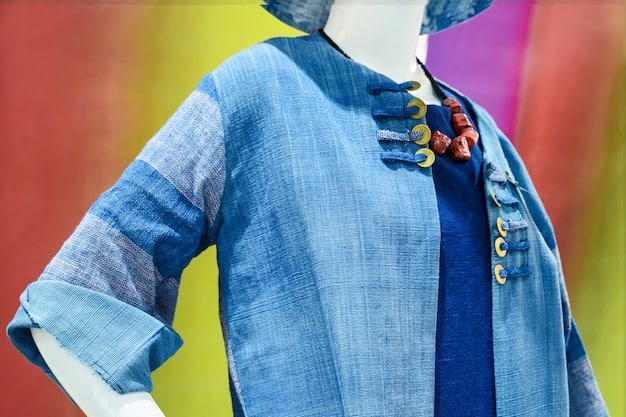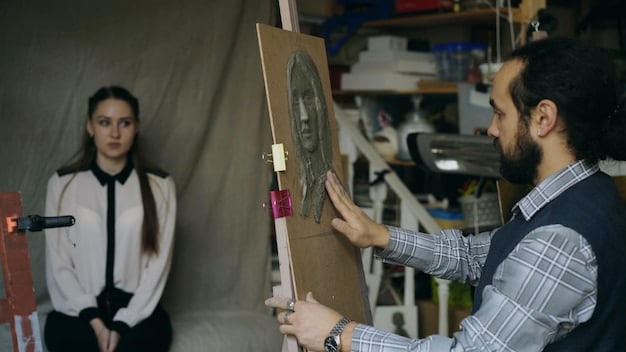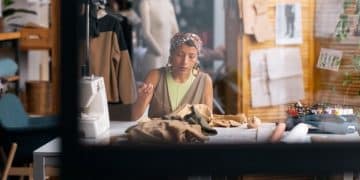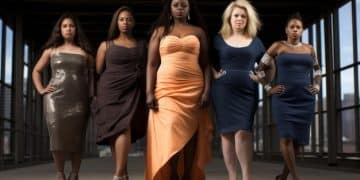Designer Spotlight: Upcycled Materials & Sustainable Design in America

Designer Spotlight: The American Designer Focusing on Upcycled Materials and Sustainable Design highlights innovative approaches to fashion and product creation, showcasing how upcycling contributes to a more sustainable future by transforming waste into high-value items.
In an era where sustainability is not just a buzzword but a necessity, meet the Designer Spotlight: The American Designer Focusing on Upcycled Materials and Sustainable Design who is revolutionizing the fashion and design industry with their innovative use of discarded materials to create stunning, eco-friendly pieces. Join us as we explore their journey, their design ethos, and their vision for a greener future.
The Rise of Upcycled Fashion in America
Upcycled fashion is rapidly gaining traction in the United States, driven by a growing awareness of environmental issues and a desire for unique, sustainable products. This movement is reshaping the design landscape, challenging traditional fashion norms and fostering a culture of creativity and resourcefulness.
What is Upcycled Fashion?
Upcycled fashion involves transforming discarded materials into new, high-quality items. Unlike recycling, which breaks down materials to create something new, upcycling repurposes existing materials, reducing waste and minimizing the environmental impact.
- Reduces Waste: Upcycling diverts materials from landfills, decreasing pollution and conserving resources.
- Unique Designs: Each upcycled piece is one-of-a-kind, offering consumers distinctive and stylish options.
- Environmental Benefits: By reusing materials, upcycling lowers the carbon footprint associated with manufacturing new products.
The rise of upcycled fashion is not just a trend; it’s a fundamental shift in how we perceive and consume fashion. It’s about valuing creativity, sustainability, and the story behind each garment.
Meet the Designer: A Pioneer in Sustainable Design
At the forefront of the upcycled fashion movement is a visionary American designer who is making waves with their innovative approach to sustainable design. This designer is committed to creating beautiful, high-quality pieces while minimizing their environmental impact.
The Designer’s Background and Influences
This designer’s journey began with a deep appreciation for craftsmanship and a concern for the environment. Inspired by traditional techniques and a desire to reduce waste, they set out to create a brand that embodies sustainability and style.

Their work is influenced by a range of sources, from vintage textiles to modern art, resulting in a unique and eclectic aesthetic that appeals to conscious consumers.
- Commitment to Sustainability: The designer prioritizes environmentally friendly practices throughout their design and production processes.
- Innovative Use of Materials: They are known for their ability to transform discarded materials into stunning, high-fashion pieces.
- Ethical Production: The designer ensures fair labor practices and supports local artisans, contributing to a more equitable fashion industry.
This designer’s dedication to sustainability and innovation has earned them recognition within the fashion industry and a loyal following of eco-conscious consumers.
The Design Ethos: Sustainability and Style
The design ethos of this American designer is centered around the principles of sustainability and style. They believe that fashion can be both beautiful and environmentally responsible, and they strive to create pieces that reflect this philosophy.
Balancing Aesthetics and Environmental Impact
The designer is committed to minimizing the environmental impact of their designs without compromising on aesthetics. They carefully select materials and employ innovative techniques to create pieces that are both stylish and sustainable.
Their collections often feature repurposed denim, vintage fabrics, and discarded industrial materials, transforming them into unique and eye-catching garments.
This designer’s ability to balance aesthetics and environmental impact is a testament to their creativity and commitment to sustainable design.
The Upcycling Process: From Waste to Wardrobe
The upcycling process is at the heart of this designer’s work, transforming waste materials into desirable fashion pieces. This process requires creativity, skill, and a deep understanding of materials and design.
Sourcing Materials
The first step in the upcycling process is sourcing materials. The designer works with a network of suppliers, including textile recyclers, vintage shops, and industrial waste facilities, to gather discarded materials.
They carefully select materials based on their quality, texture, and potential for transformation.
Design and Transformation
Once the materials are sourced, the designer begins the process of transforming them into new garments. This involves deconstructing and reconstructing the materials, creating unique patterns and designs.
- Innovative Techniques: The designer employs a range of techniques, including patchwork, quilting, and embroidery, to create intricate and visually appealing designs.
- Attention to Detail: Each piece is crafted with meticulous attention to detail, ensuring high quality and durability.
- Zero-Waste Approach: The designer strives to minimize waste throughout the production process, utilizing every scrap of material.

The upcycling process is not just about creating new garments; it’s about giving discarded materials a new life and adding value to something that was once considered waste.
The Impact: Changing Perceptions of Sustainable Fashion
The work of this American designer is having a significant impact on the fashion industry, changing perceptions of sustainable fashion and inspiring other designers to adopt more environmentally friendly practices. It is a shift in the way we think about sustainable fashion and its appeal.
Raising Awareness
By showcasing the beauty and creativity of upcycled fashion, the designer is raising awareness of the environmental issues associated with the fashion industry.
They are also demonstrating that sustainable fashion can be stylish, innovative, and desirable.
Inspiring Change
The designer’s work is inspiring other designers to explore upcycling and sustainable design practices. They are proving that it is possible to create a successful fashion brand that is both environmentally and socially responsible. This is setting a new standard in the fashion world.
This designer’s influence extends beyond the fashion industry, inspiring consumers to make more conscious choices and support sustainable brands.
The Future of Upcycled Design
The future of upcycled design is bright, with growing demand for sustainable and ethical fashion. This American designer is poised to play a leading role in shaping this future, driving innovation and inspiring positive change.
By continuing to push the boundaries of upcycled design and promoting sustainable practices, they are helping to create a more environmentally responsible and equitable fashion industry.
Their commitment to sustainability, creativity, and ethical production makes them a true pioneer in the world of upcycled design.
| Key Point | Brief Description |
|---|---|
| ♻️ Upcycled Fashion | Transforms waste into high-quality, unique fashion items. |
| 🌱 Sustainable Design | Focuses on minimizing environmental impact through innovative materials and processes. |
| 🌎 Environmental Benefits | Reduces waste, conserves resources, and lowers carbon footprint. |
| 💡 Design Ethos | Balancing aesthetics with a commitment to sustainability. |
FAQ
▼
Upcycled fashion involves transforming discarded materials into new, higher-value products. This process reduces waste and promotes sustainability by giving old items a new purpose and aesthetic appeal.
▼
Sustainable design minimizes environmental impact by using eco-friendly materials and processes. It helps conserve resources, reduce pollution, and create a more responsible and ethical fashion industry.
▼
This designer sources materials from textile recyclers, vintage shops, and industrial waste facilities. They carefully select items based on quality, texture, and potential for creative transformation into unique garments.
▼
Upcycling techniques include patchwork, quilting, and embroidery. These methods help create intricate designs while utilizing every scrap of material, minimizing waste and enhancing the garment’s unique appeal.
▼
Upcycled fashion raises awareness about environmental issues, inspires change by promoting responsible design practices, and encourages consumers to support sustainable brands. This helps to shift the focus to an eco-friendly fashion industry.
Conclusion
The designer featured in this spotlight exemplifies the power of creativity and sustainability in the fashion industry. By focusing on upcycled materials and innovative design, they are paving the way for a more environmentally responsible future. Their work not only transforms discarded materials into stunning pieces but also inspires others to reconsider waste and embrace sustainable practices.





